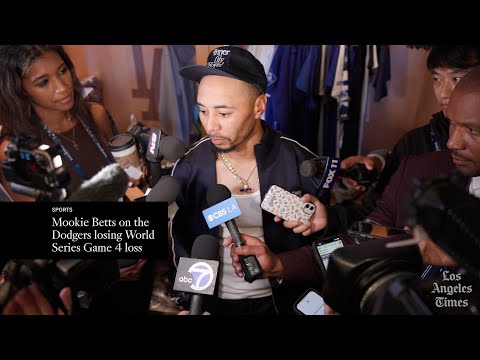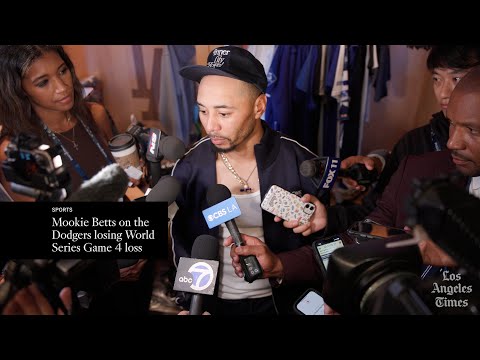Shohei Ohtani wore the same mask of calm that he always wears.
He spoke with detachment, as he often does.
By the time Ohtani walked into the interview room at Dodger Stadium after his team’s 6-2 defeat in Game 4 of the World Series, however, he was already devising his redemption.
“Of course, I’d like to prepare to be available for every game in case I’m needed,” Ohtani said in Japanese.
Ohtani wants to pitch again in this World Series.
He wants to pitch again, even after he was saddled with the loss on Tuesday night by the Toronto Blue Jays.
He wants to pitch again, even after the physical demands of reaching base nine times in an 18-inning victory the previous night clearly diminished him on the mound.
If Ohtani pitches, he would almost certainly pitch in relief.
Pitching in middle relief doesn’t make sense for Ohtani, considering that when he departs the game as a pitcher, rules would require the Dodgers to play him in the outfield or lose him as a hitter for the remainder of the game.
They might as well use him as a closer, and they might as well use him in a World Series clincher, either in Game 6 or 7.
This is who Ohtani is. This is what he does.
He won’t let the disappointment of his World Series pitching debut scare him away from pursuing another dream. He isn’t afraid of failure.
Game 4 was a failure.
The six-hour 39-minute game the Dodgers played the night before offered Ohtani cover. He reached base a record nine times. He homered twice and doubled twice. His leg cramped at some point. He went to sleep at 2 a.m.
But Ohtani didn’t take any of the excuses that were offered to him.

“I have no plans of saying the game yesterday was this or that,” he said.
The truth was revealed in his play.
Ohtani looked exhausted. He sweated profusely and looked as if he might be dehydrated. He looked, well, human.
His fastball uncharacteristically never touched 100 mph, but he pitched well for the most part. His only notable mistake was an elevated sweeper he threw in the third inning to Vladimir Guerrero Jr. that was deposited over the left-field wall for a two-run home run.
Ohtani struck out the side in the fourth inning, as well as the first batter he faced in the fifth. Manager Dave Roberts said that pitching coach Mark Prior approached Ohtani in the sixth innings and asked him how much he had left.
“He said he had three more innings,” Roberts said.
Ohtani couldn’t make it out of the seventh inning. In fact, he couldn’t even record an out in the seventh, starting the inning by giving up a single to Daulton Varsho and a double to Ernie Clement. With Ohtani clearly gassed, Roberts called in Anthony Banda, who allowed the two inherited runners to score.
Ohtani’s final line: Six innings, four runs, six hits, a walk and six strikeouts.
He said his goal was to pitch seven innings.
Ohtani didn’t have the game he wanted in the batter’s box, either. It didn’t help that he didn’t have any form of lineup protection. No. 9 hitter Andy Pages, who batted in front of him, was 0 for two and is now batting .080 this postseason. Mookie Betts, who batted behind him, was hitless until the eighth inning when the game was already out of reach. Betts is batting .158 in this World Series.
Ohtani walked in the first inning but was hitless in the three at-bats that followed. Not one of the 14 pitches he saw from Blue Jays starter Shane Bieber was near the middle quadrant of the plate.
Being a starting pitcher and leadoff hitter in the same game was hard enough. Being a starting pitcher and a leadoff hitter in the same game after an 18-inning battle was revealed to be downright impossible. Because if Ohtani couldn’t do it, nobody could.
Instead of moping over the setback, Ohtani has started eyeing his next boundary-pushing maneuver: To be a leadoff hitter and high-leverage reliever in the same game.
The World Series is now tied, two games apiece. The fixation Ohtani has with finding new methods to win games could be why the Dodgers finish as champions again.
